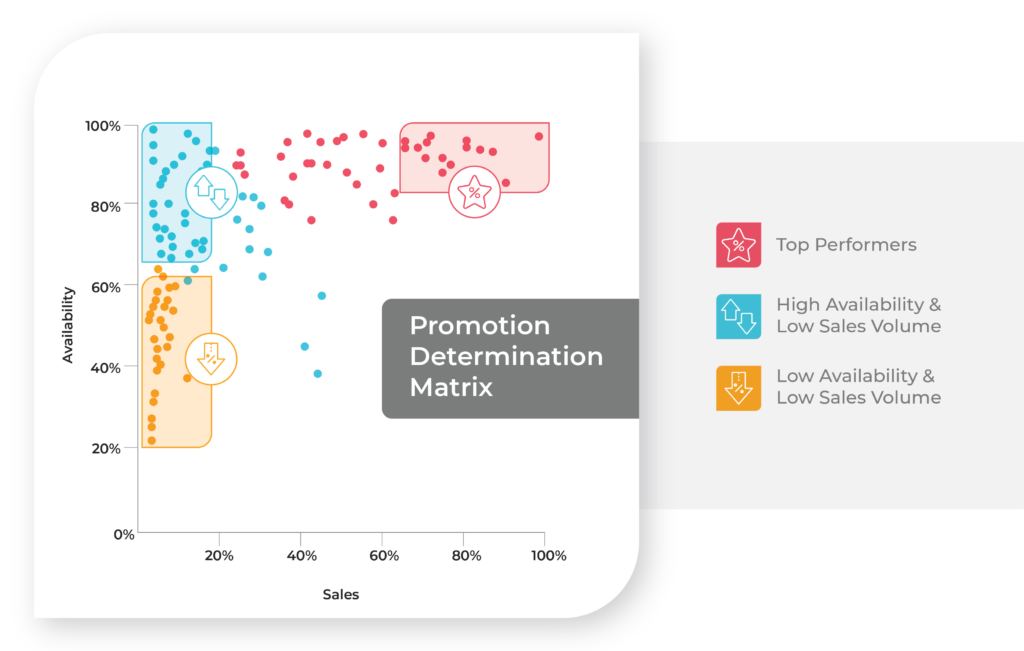Unveiling the power of market segmentation: maximising outcomes and returns
In today’s dynamic and competitive business landscape, understanding the market and aligning the appropriate strategies is crucial for any successful enterprise.
To achieve this, a comprehensive level of segmentation is imperative. It not only enables us to delve deeper into the market but also empowers us to tailor our approach to different store segments, ultimately maximising outcomes and returns. Let’s explore how our high-level segmentation can uncover valuable insights and opportunities for growth.

The importance of market segmentation
The informal retail sector is a complicated and complex environment. It comprises a vast array of cultures, geography, and locations, where uniformity cannot be assumed. Even within the same location, there is a variety of cultures, demographics, and consumers defined by their customs or income status. In this sector, earning per capita is an unreliable measure because income distribution varies within the same zones. Thus, outlets that target specific market segments emerge within these locations, highlighting the significance of segmentation.
Pareto’s principle is certainly alive and kicking in this market. The segmentation of stores depends on the objectives at hand. Turnover alone is an unreliable measure since some stores become distribution points for certain products, driving up their turnover while their available product basket remains limited. Other factors that define store segmentation include the ranging of specific categories and sub-categories, as well as the prominence of market-leading brands versus challenger brands.
What does market segmentation look like?
To effectively implement market segmentation, various elements need to be considered:
1. Store and owner profiles
Analysing the unique characteristics of each store and its owners is the initial step in the segmentation process. Store size, location, and ownership type provide valuable insights into the specific challenges and opportunities associated with each establishment.
2. Community demographics
Although a work in progress, community demographics also play a crucial role in segmentation. Understanding the characteristics, preferences, and behaviors of the local population enables better catering to their needs and expectations, fostering stronger customer relationships.
3. Outlet make-up and infrastructure
Assessing the composition and available infrastructure of outlets is another essential element of segmentation. Factors such as size, shelf space, and the presence of appliances significantly influence a store's capacity to carry and display products effectively. Understanding these variables allows tailoring strategies to optimise product placement and visibility.
4. Product basket available
The assortment of products offered by a store is a key consideration in segmentation. analysing the product basket provides insights into customer demand and preferences, enabling informed decisions about product mix, pricing strategies, and promotional campaigns that resonate with specific customer segments.
5. Supply/distribution points
Understanding the supply and distribution points within a market is pivotal for effective segmentation. Mapping out these points helps identify potential market gaps and optimise resource allocation to capitalise on untapped opportunities. Streamlining the supply chain ensures efficient delivery and product availability across various store segments.
6. Informal retail densities & workforce management
Considering the presence of informal retail establishments and their impact on consumer behaviour is crucial in segmentation. Strategies can be devised to address the unique challenges and opportunities associated with this segment, particularly in terms of cost-to-serve models, procurement efficiencies, and supply chain solutions.
7. Category/sub-category product performance
Store transactional data, such as order records and supplier invoices, provides valuable insights into the performance of different products across store segments and geographic locations. This analysis extends beyond the store level and includes category, sub-category, and product performance. Identifying emerging trends, capitalising on top-performing products, and optimising inventory management become possible through this segmentation approach.
The use cases of market segmentation
- Segmentation of wholesalers: From a supply perspective, wholesalers can be segmented based on their unique characteristics and requirements.
- Segmentation of informal retail sectors: Different types of informal retail sectors, such as spaza shops, taverns, etc., can be segmented to better understand their distinct challenges and opportunities.
- Segmentation based on basket adoption: Basket SKU’s can be segmented by category and sub-category to define and target specific customer segments effectively.
- Segmentation based on cultural nuances and consumer profiles: By understanding cultural nuances and consumer profiles, segmentation can be tailored to specific regions, taking regional brands into account.
Nationality %
- South Africa
- Ethiopian
- Somalian
- Zimbabwean
- Other
Spaza
Tavern
Hair salon
Car wash
Internet cafe
Gender %
- Female
- Male
Spaza
Tavern
Hair salon
Car wash
Internet cafe
Age %
- 18-24
- 25-34
- 35-44
- 45-54
Spaza
Tavern
Hair salon
Car wash
Internet cafe
Why market segmentation is critical
The ultimate goal of our segmentation strategy is to define the opportunity gaps within a market and uncover the potential returns associated with those opportunities. By leveraging the insights gained through our meticulous segmentation process, we can align our resources, investments, and marketing efforts to maximise outcomes and drive sustainable growth.
Market segmentation helps identify target stores with a higher likelihood of success, preventing over-capitalisation in a market with a vast number of outlets. By understanding the availability and growth opportunity gaps, strategies can be tailored to address specific customer segments effectively. Agnostic strategies can be developed to cater to different segments, considering factors such as brands, flavours, sizes, and pricing. This can be achieved while maintaining brand integrity and reputation.
Matching the most appropriate strategy to the correct market segment is essential. For brands in the formal retail sector, a similar example can be used to demonstrate the power of market segmentation and its impact on commercial returns and reach.

Spaza tiering overview
Baby food
Availability per tier
Grains/maize
Availability per tier
Insect repellent
Availability per tier
Baked beans
Availability per tier
In conclusion, market segmentation is a powerful tool that enables us to understand the intricacies of the market and tailor our strategies accordingly. By considering store and owner profiles, community demographics, outlet make-up, product assortment, supply/distribution points, and transactional data, we unlock valuable insights that help us identify and seize untapped opportunities. With this knowledge in hand, we can confidently navigate the market, optimise resource allocation, and drive superior returns. Let us unlock the full potential of market segmentation and pave the way for a prosperous future.
